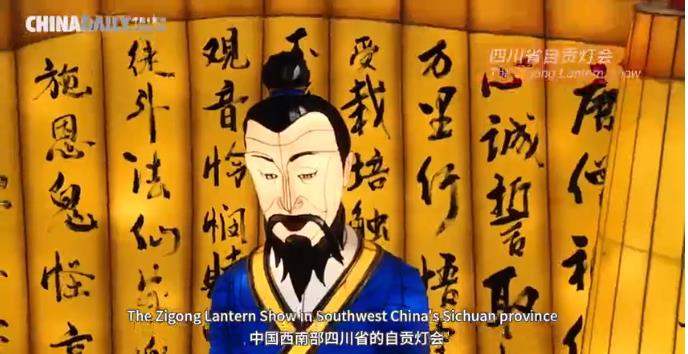Chinese Lantern Festival
The Lantern Festival is one of the most important traditional festivals of China and has been widely celebrated by overseas Chinese throughout the world. In US (cities like Dallas, Boston, Arizona, California, Chicago), Japan, Korea, Thailand, Germany and many other counties, there are grand celebrations of Lantern Festival in 2021 and in the years to come. In June 2008, the Chinese Lantern Festival was selected into the second batch of national intangible cultural heritage of China.
Chinese Lantern Festival Facts
- Lantern Festival In Chinese: 元宵节 (yuán xiāo jié), Yuan Xiao Festival
- Other names: Shang Yuan Festival (上元节, shàng yuán jié), Xiao Zheng Yue (小正月, xiǎo zhēng yuè), Yuan Xi (元夕, yuán xī)
- History: 2000+ years
- Activities: enjoy the lanterns, dragon-lantern show, lion dance, eat tang yuan, guess lantern riddles and set off fireworks
- Lantern Festival food:tangyuan (glutinous rice balls)
The first month of the Chinese lunar calendar is called yuan (元) month, and in ancient times people called night xiao (宵). It is the first night to see a full moon after the Chinese Lunar New Year (Spring Festival). Thus, the Chinese Lantern Festival is also called "Yuan Xiao Festival" or "Shang Yuan Festival"
According to Chinese tradition, at the very beginning of a new year, when there is a bright full moon hanging in the sky, there should be thousands of colorful lanterns hung out for people to appreciate. So, Chinese people celebrate it as Lantern Festival.
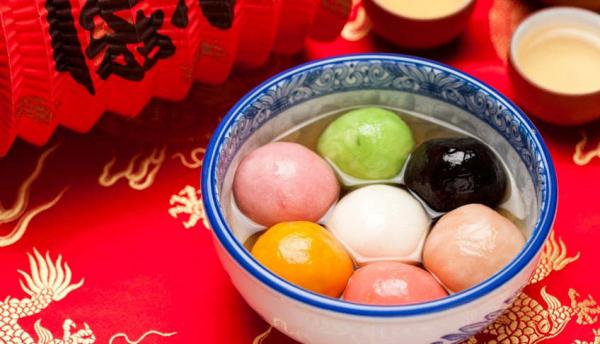
When is the Chinese Lantern Festival 2025/2026
The Lantern Festival 2025 falls on February 12, 2025. The Lantern Festival 2026 falls on March 3, 2026.
| Year | Date | Day |
|---|---|---|
| 2026 | Mar. 3 | Tuesday |
| 2025 | Feb. 12 | Wednesday |
| 2024 | Feb. 24 | Sunday |
| 2023 | Feb. 5 | Sunday |
| 2022 | Feb. 15 | Tuesday |
Legend of the Lantern Festival
According to Chinese ancient legend, Heavenly Jade Emperor angered and wanted to destroy a town on earth as his favorite bird was killed by a hunter by accident. A kind fairy heard of this vengeance and warned the people to light lanterns all over the town on that appointed day. All the people at the town did that. The emperor looked down the town from the sky and it seemed that it had blazed. He was satisfied and left. From that day on, people celebrated the anniversary of their deliverance by carried lanterns through the streets at the first full moon night of the year.
Origin and History of Chinese Lantern Festival
To know about the Chinese lantern festival, you have to know its history – when and why it was established and how it was celebrated in the very beginning and through the historical dynasties.
The formation of the Lantern Festival custom has a long process, rooted in the folk lanterns to pray for the ancient customs. According to the records, the Chinese Lantern Festival was originated at Han Dynasty (202BC – 220AD), with the Buddhism flourishing in China by then. Emperor Hanming (28-75) ordered to light lanterns in palace and temples to show his respect to Buddha at 15th of the first lunar month. This practice was expanded to other parts of China along the years.
In Kaifeng, during the Northern Song dynasty (960-1126), lanterns were carried by dancers concealed inside dragons, as in Lunar New Year's parades today. Everyone out on the streets and theater, drinking, eating, and enjoying music and acrobatics; some carried lanterns in the long pole.
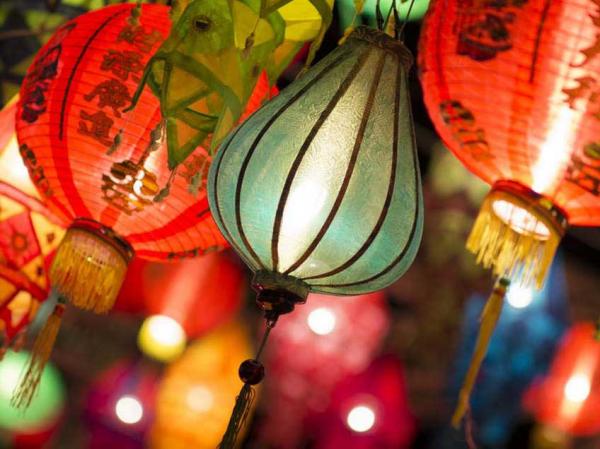
During the Tang Dynasty, as the cultural exchanges between China and foreign countries were promoted, Buddhism further flourished and reached its heyday, officials and ordinary people “light on the lanterns for Buddha" in the fifteenth day of the first month. Since the Tang Dynasty, decorating with lanterns has become a legal thing during Yuanxiao Festival.
In the Song Dynasty, from the 14th to the 18th of the first lunar month, there were a wide spectrum of Yuanxiao Festival events and activities, including the “wandering about the lantern fair”. The Lantern Festival in the Song Dynasty developed into a lively secular carnival. At that time, the custom of guessing lantern riddles was created. Riddles were written on a note pasted on the lanterns. Those who guessed the answers to the riddles could get a small reward
The Lantern Festival cerebration reached its peak at Ming Dynasty, lasting for ten days. Downtown Area was set aside for displaying the lanterns. Dengshikou in Beijing was the place for selling and buying lanterns on that day.
The Lantern Festival is celebrated as the Torch Festival in some parts of Southwest China. It is said that the Lantern Festival began in ancient times when people held torches in the countryside to drive away insects and animals, hoping to reduce insect pests and pray for a good harvest. To this day, people in some parts of southwest China still make torches on the 15th day of the first lunar month with reed wood or branches, and dance in groups with torches held high in the fields or in the sunning cornfields. During the Sui, Tang and Song dynasties, it had its heyday, when tens of thousands of people joined the celebration, singing and dancing from night to morning.
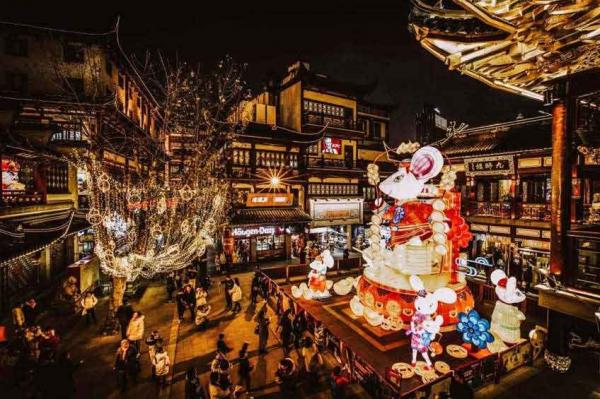
The Chinese Lantern Festival 2025 Celebration and Activities in China
Chinese Yuanxiao Festival Culture, traditions and celebrations retain today. Displaying lanterns and eating sticky rice dumplings called Tang Yuan are the most important celebrations on this day.
Display lanterns
For Lantern Festival in China, the displaying of lanterns is a major event at night. In the moonlight, lanterns of various colors, shapes, sizes and creative designs are hung in the streets. There are palace lanterns, animal head lanterns, trotting horse lanterns, flower lanterns, and birds lanterns, etc. People walk at a leisurely pace, and appreciate the creativity of diverse lanterns. Some children would carried their lanterns in the long pole, and have fun with the whole family. It is said that the brilliance of the artificial lights almost outshone the light of full moon.
Guess lantern riddles
"Guessing lantern riddles" is an essential part of Chinese Lantern Festival culture and an interesting activity/game for lantern watching during Yuanxiao Festival in China. The puzzles or riddles were written on the lanterns of just pasted on them. If one can solve that puzzles, a little gift would be given. Nowadays, lantern show is still available in many big cities like Temple of Earth and Heaven in Beijing and Chenghuang Temple in Shanghai.
Eat Tangyuan
Yuan Xiao (元宵, yuán xiāo) or Tang Yuan (汤圆, tāng yuán), a traditional food for Lantern Festival, is usually eaten together with family. Its name has a similar pronunciation as the word for "reunion" in Chinese. Most Chinese people eat Tang Yuan on this specific day with good wishes for reunion, harmony and happiness for the family.
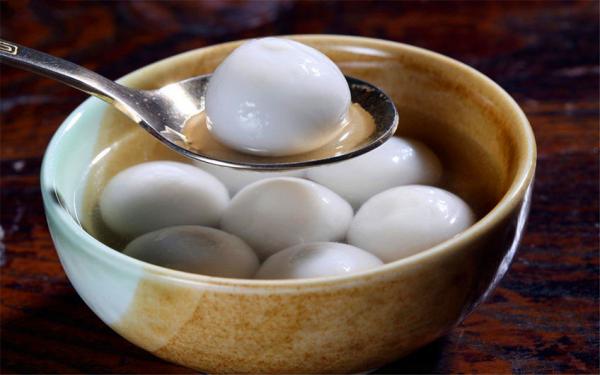
Tangyuan is made from glutinous rice flour with stuffing in round shape, kinds of stuffing like sugar, walnuts, sesame, rose petals, sweetened tangerine peel, bean paste, or jujube paste include. The round shape of the balls and the bowls where they are served, come to symbolise the family togetherness.
In Northern China, it is also called "Yue Xiao", which derives from the festival. The difference between Tangyuan and Yuanxiao is the way they are made. People in north China make yuanxiao by rolling a hard stuffing in glutinous rice flour.
In south China, tangyuan is prepared by placing the filling inside rice flour wrapping, similar to the making of dumpling. 1. Shape the dough of the rice flours into balls first. 2. Make a hold by finger and inserting the fillings. 3. Close the hole and smooth by rolling between hands.
Besides, some activities and performances would be staged in the daytime of the Lantern Festival in China, like dragon dance, lion dance, land boat dance, yangge dance, and walking on stilts, etc. Fireworks form another scene at night time.
Dragon dance & lion dance
The traditional dragon dance and lion dance bring wonderful Lantern Festival experience. The Chinese people worship the dragon and regard it as a symbol of good luck. The earliest written dragon dance was recorded in the Han Dynasty.
Lion dance is an excellent folk art in China. Whenever the Lantern Festival or assembly celebration, the lion dance is ready to bring joy and fun. This custom originated during The Three Kingdoms Period (220-280) and became popular during the Northern and Southern Dynasties (420-589).
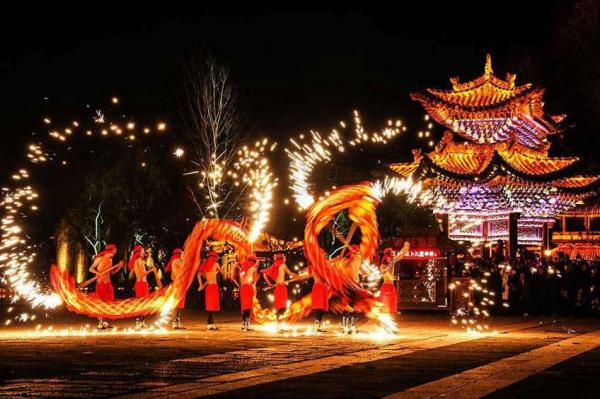
Walk on stilts
Walking on stilts is a popular folk art performance in China. Stilts, originally one of the hundred operas in ancient China, appeared as early as the Spring and Autumn Period (770-476BC). At the Beijing Temple Fair – Chinese Lantern Festival celebration, you can see artists perform walking on stilts, in addition to dragon and lion dance.
Top 3 Lantern Shows in China for Lanter Festival 2025
Zigong Lantern Show (四川自贡灯会)
Zigong, a city in southwest China's Sichuan province, is well-known as the "Home of the Dinosaurs" due to its vast collection of dinosaur fossils. It is also famous for producing colorful traditional Chinese lanterns. The lantern festival exhibition in the city, which can date back to the Tang Dynasty, is one of the top lantern shows in China. The 28th Zigong International Dinosaur Lantern Festival in 2022 is at Zigong Overseas Chinese City.
Yuyuan Lantern Show (上海豫园灯会)
Yuyuang, or Yu Garden, is one of the most famous Chinese traditional gardens. From the 1st day to the 18th day of the first month of each Chinese Lunar New Year, a lantern show is held in the garden. The earliest show can be dated back in City God Temple area adjacent to Yuyuang in Ming and Qing Dynasty. It was listed in National Intangible Cultural Heritage of China in 2010.
Qinhuai Lantern Show (南京秦淮灯会)
A large-scale show is held yearly at the Confucius Temple of Nanjing from Spring Festival till Lantern Festival. As the area is by Qinhuai River, it is officially named Lantern Fair on Qinhuai River. There is an old Nanjing saying, "If you don't see the New Year lanterns at Confucius Temple, you have not celebrated the new year; if you go to Confucius Temple but don't buy a lantern, you haven't celebrated the new year properly."
Click the picture to view video of Chinese Lantern Shows on Chinadaily:
To know more about Chinese Lantern Festival culture and facts:
Is Lantern Festival the Chinese Valentine's Day?
Most people consider Double Seventh Day (Qixi Festival) the Valentine's Day in China, despite that, The Lantern Festival is also a romantic holiday in the Chinese traditional festivals. The lantern fair, in the traditional feudal society, provided an opportunity for unmarried men and women. At that time, young girls were not allowed to go out of home for society activity freely, but could go join the Lantern Festival activities and games. Lantern appreciation was just a perfect chance to make friends. Unmarried men and women could look for a date while enjoying the lantern show. Therefore, the Lantern Festival is also known as a typical Chinese Valentine's Day.

The Lantern Festival and Taoism
The 15th day of the first lunar month is not only the Lantern Festival in Chinese folk culture, but also the Shang Yuan Festival in Taoist culture.
The Shangyuan Festival is related to the deities worshiped by Taoism. Taoism is a polytheistic religion. There are various deities worshiped in Taoism, among which the three great officials (三官大帝) are the ones with higher status and more influential. There are many theories about the origin of the three great officials, namely, heaven, earth and water. Some people say that they are derived from the natural worship of heaven, earth and water in ancient Chinese religions. Others say that they are derived from the three qi of the five elements, namely, jin (gold), earth and water.
It is said that the heaven bless people, the earth forgive people’s sins, and the water dispels disasters. The great officials were born born on the 15th day of the first month, the 15th day of the seventh month, and the 15th day of the tenth month respectively.
Therefore, Taoism named the 15th day of the first month as the Shangyuan Festival (Lantern Festival), July 15 for the Hungry Ghost Festival, and October 15 for the Xia Yuan Festival.
